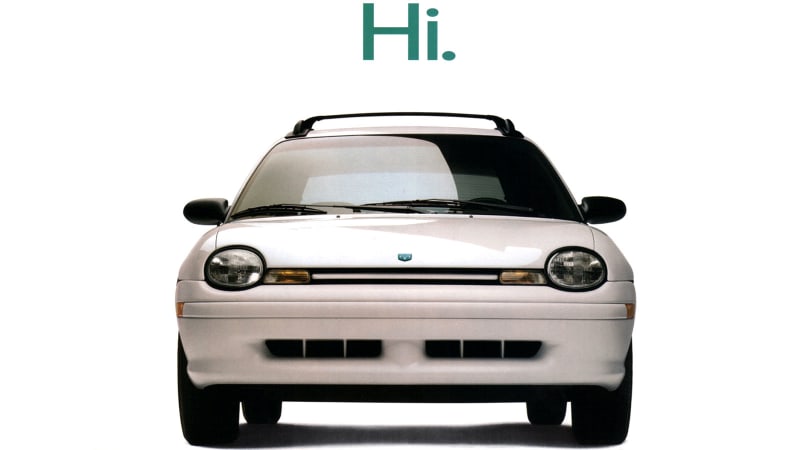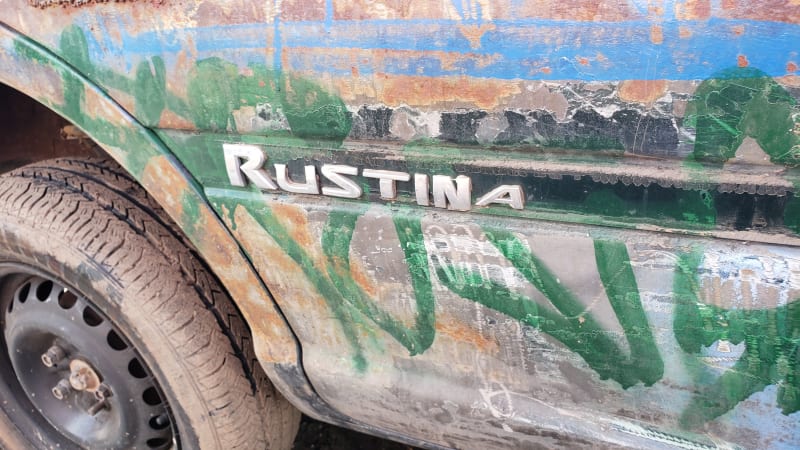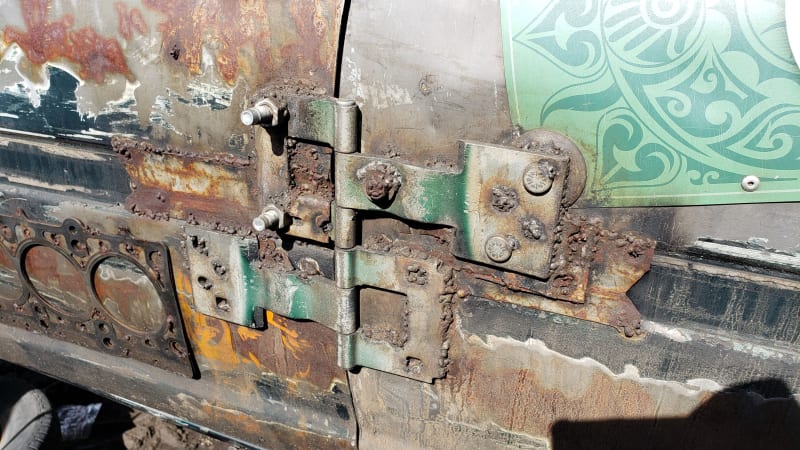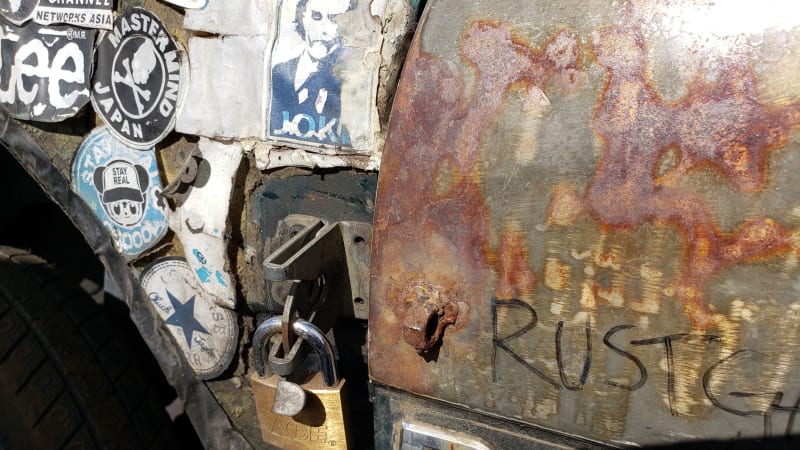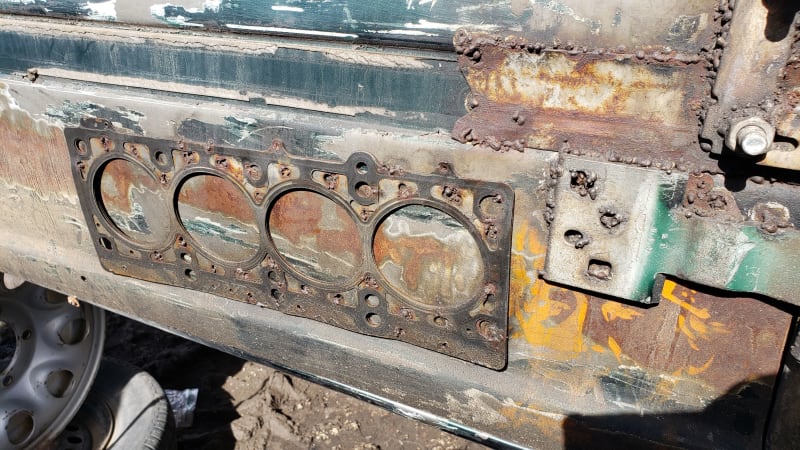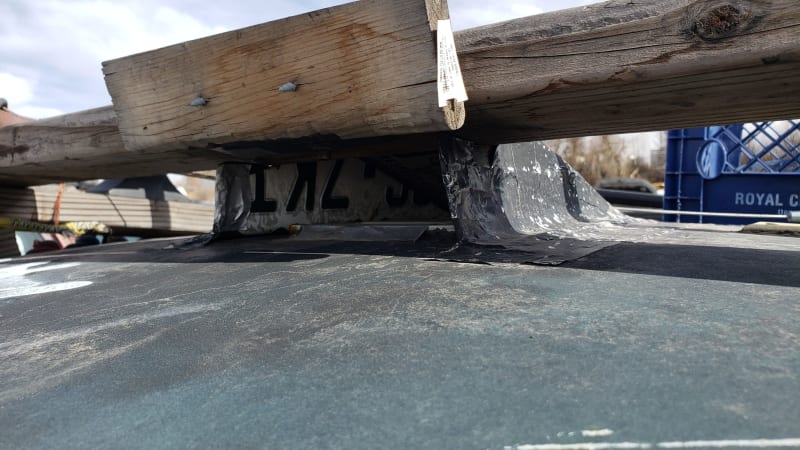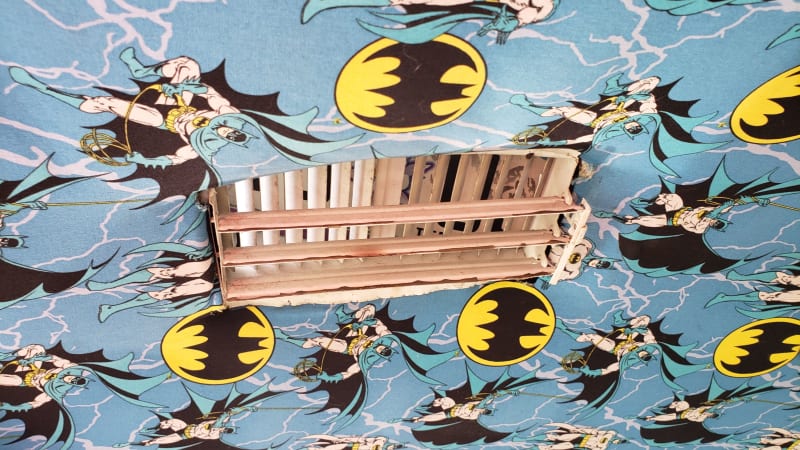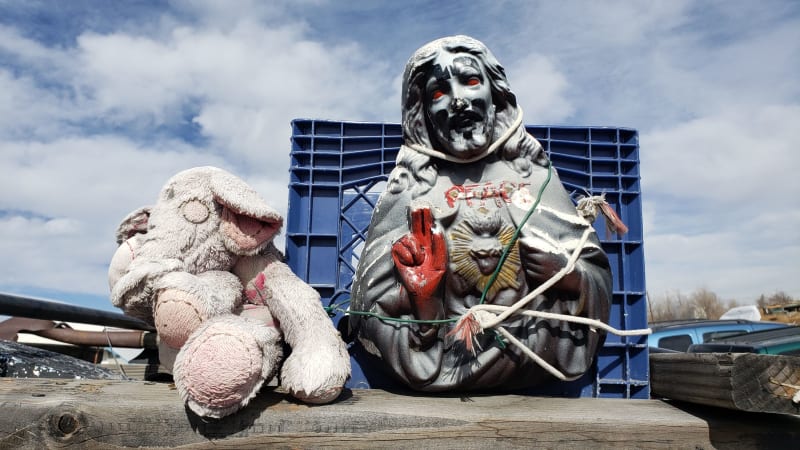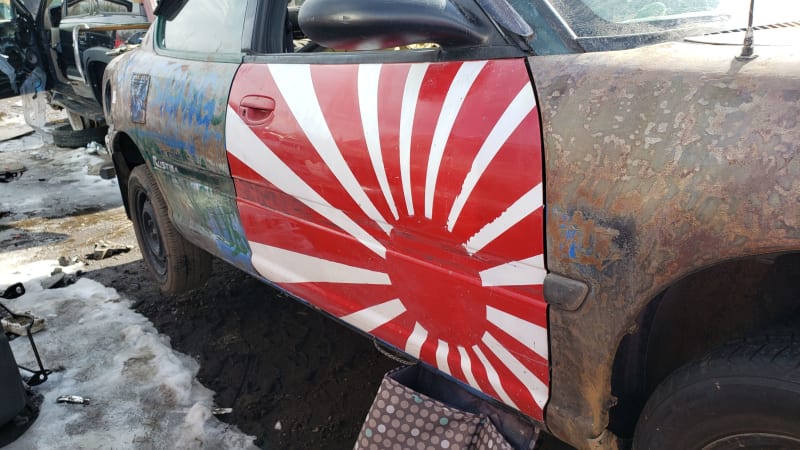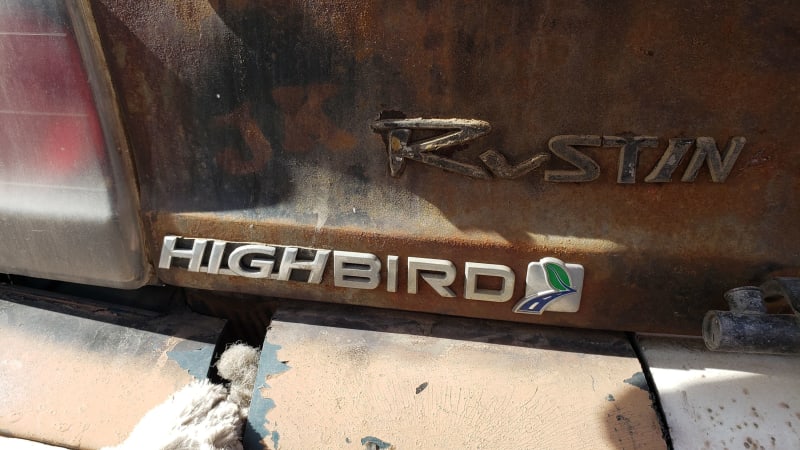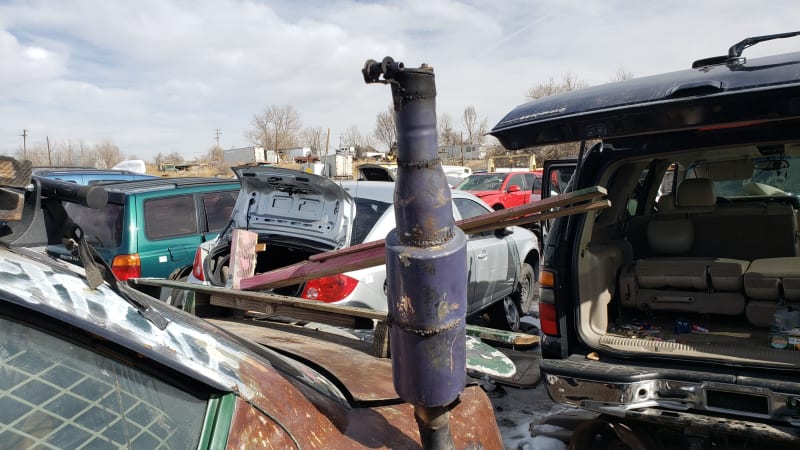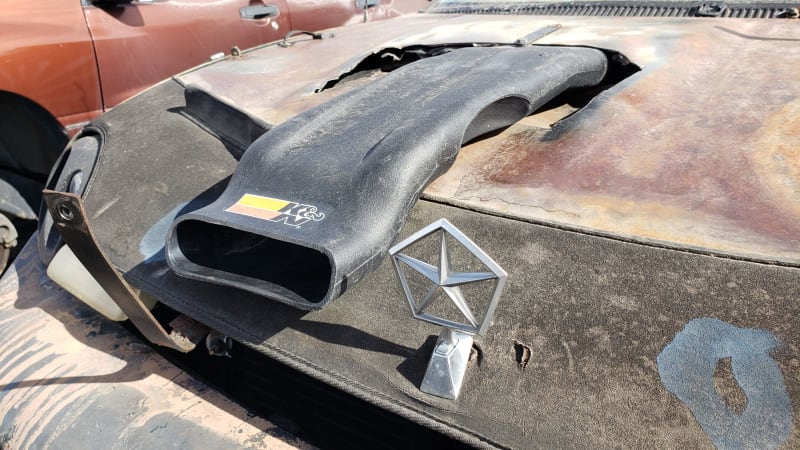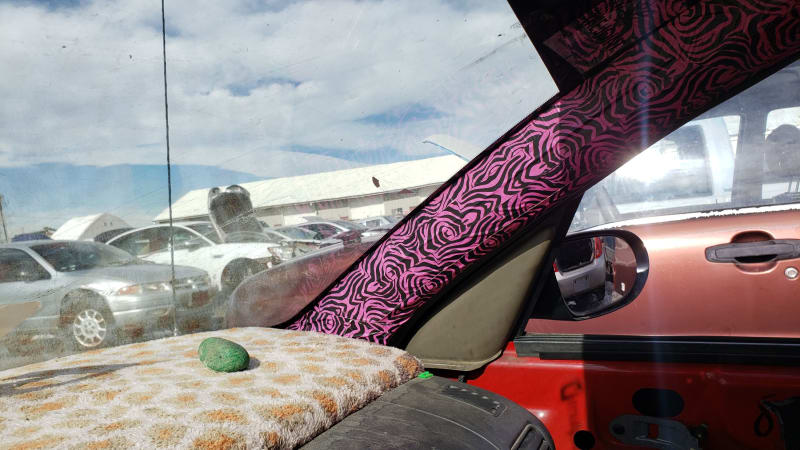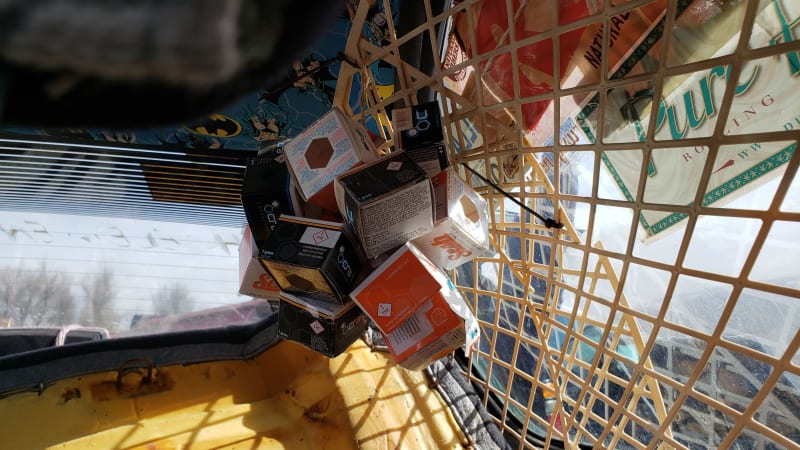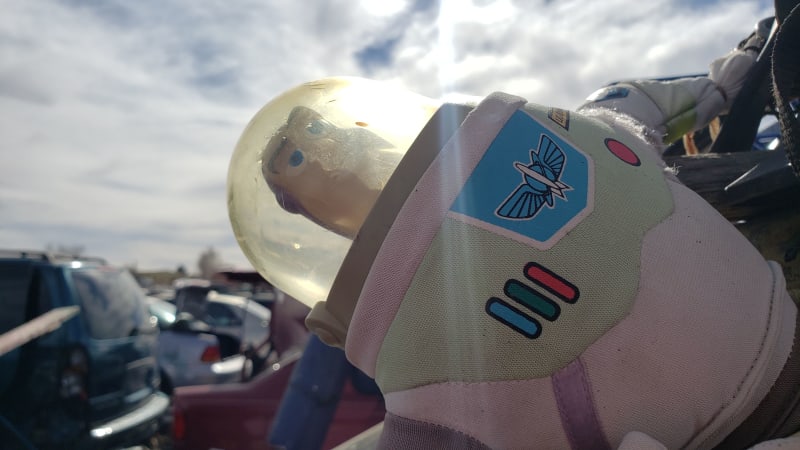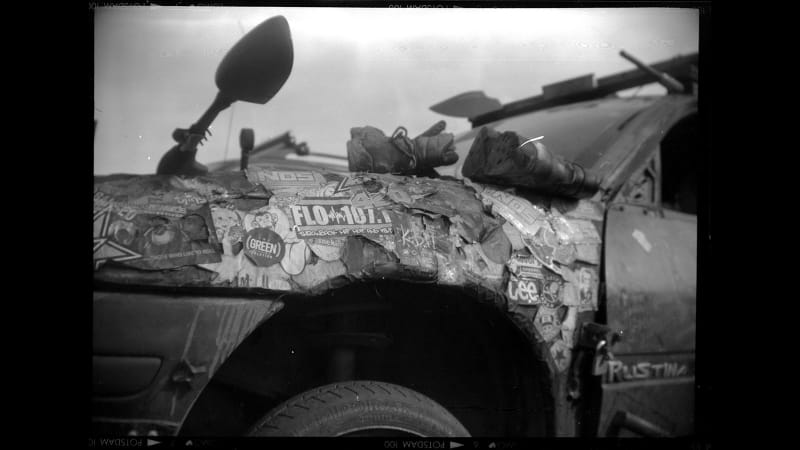I’ve found some pretty interesting heavily modified vehicles in junkyards over the years, including wild art cars with stuff glued all over them and/or covered with murals and end-of-life machines that fell into the hands of fabricator types with lots of tools and random parts lying around. Today’s Junkyard Gem seems to be more the latter type yet definitely shows signs of serious artistry at the same time. Meet Rustina, a 1995 Dodge Neon whose last few years on the streets of Colorado were very eventful.
The Neon was introduced to the American driving public as a 1995 model with both Dodge and Plymouth badging (and identical pricing for both marques). It had an irritatingly cute marketing campaign that Chrysler later repudiated in brutal fashion during the more fearful “Axis of Evil” era of the following decade. While the Neon said “Hi,” the Caliber and Nitro thirsted for blood!
I don’t know if the creator(s) of this car’s modifications were trying to de-cutify the “Hi” version of the first-year Neon or were just working with a cheap car at hand, but they assigned an endearing name to it: Rustina! I am reminded of the legendary Slokyo Drift Suzuki Swift that I documented last year, and it’s possible that both cars got their upgrades at the hands of the same individual or crew. Naturally, I saved both sets of custom badging from the cold steel jaws of The Crusher, and now they adorn my garage walls along with other art.
Thanks to the car’s unique name, I was able to find a YouTube channel with plenty of Rustina history. The newest Rustina videos appear to be from 2019, so I suspect that either something mechanical let go or Rustina ended up as a parts car for nicer/faster Neons. In any case, she looks to have retired
The first detail I noticed on this car was the suicide-door conversion. This is a lot harder to pull off correctly than, say, a Lambo door conversion using off-the-shelf components. This looks like it was done in one afternoon with materials on hand, and it shows strong (if hurried) fabrication skills.
The welds on the door hinges aren’t so pretty, but they’re good and solid. The hinge hardware came from something much heavier than a cheap econobox.
The hasp-and-padlock rig means the car could still be locked when parked. I’ve done the same kind of thing on my 1965 Chevy Impala art car.
When you replace a head gasket, commemorate the occasion by putting the old gasket on the car (or just use the gasket as a spray-paint stencil). This is a 24 Hours of Lemons tradition that seems to have spread to the wider world. Actually, I wouldn’t be shocked to learn that Rustina’s owner is a Lemons racer, though he doesn’t look familiar at first glance.
There’s a race-car-style driver-cooling scoop on the roof, made from license plates.
The register grate can be closed on cold days. Note the Batman blanket used as a headliner.
Stuffed animals, rubber ducks, and religious statues abound.
Even though the Neon was a pure Detroit design, there’s a slammed-Civic-style Japanese battle flag on the passenger front door.
Rustina appears to be a rare Neon Highbird Edition.
The semi-tractor-style exhaust stack is Ram Tough™.
This cold-air-induction system for the engine is fully functional. The classy hood ornament came from a Chrysler minivan.
The interior has been made more pleasant with custom fabric and tape.
There’s a sort of Calder-style mobile sculpture made with empty cannabis-concentrate boxes. Welcome to Colorado!
I’m glad I was able to document Rustina before she went to The Crusher, because a lot of skill and creativity went into her creation.
It should go without saying that I photographed this car with one of my old film cameras, in this case a 1940s Ansco Shur-Shot.
It brings a whole new meaning to the phrase “Have a nice day!”
Source: www.autoblog.com

